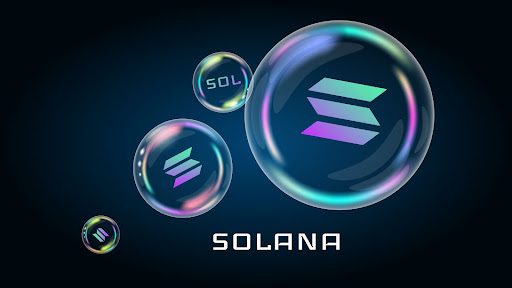Solana is a… it’s a, *yawn,* “Ethereum Killer.”
Oh boy — here we go again.
Ethereum killers are like Jason from Friday the 13th. They keep coming back even after twelve sequels and when everyone’s already bored of them.
Many cryptocurrencies have claim the title “Ethereum killer” and fail to usurp ETH, even if their project is technically Jason Voorhees never wins in the end. The same is true about ETH killers. Conversely, Solana is a different breed amongst the “ETH Killers.”
Like Cardano, it has strong fundamentals based on blockchain basics; and like Polkadot, it’s profoundly versatile and contains a promising ecosystem around it.
If anything, Solana may be the Cardano killer or even the Binance Smart Chain killer. Let’s break down and see what else Solana has to offer.
Proof of History: The Fundamentals Behind Solana
We don’t know who’s making these trendy crypto phrases, but could they chill out? Digital currencies have more made-up words than Star Trek. That’s saying a lot by the way.
At any rate, Proof of History is definitely not another consensus mechanism like Proof of Work or Proof of Stake. Proof of History works in conjunction with PoS.

Consensus mechanisms like PoW or PoH are used to tell time within a decentralized network. It’s so that miners (the people who validate the network) can agree on the order of things.
In a decentralized system, the blockchain needs to run of its own volition. This means you cannot rely on an external clock that could be subject to manipulation or failure.
Bitcoin mining isn’t about computation, it’s about independently agreeing on the order of things. Proof of Work mining is the clock in a decentralized system.
The same is true of Solana – with one important caveat. Unlike Bitcoin, Solana doesn’t need timestamps or external synchronizing structures to verify transactions.
Instead, Solana creates a historical record that proves that an event has occurred at a specific moment in time. Through Proof of History, Solana’s blockchain can better ensure that a certain action took place at a certain point in time.
“Synchronized clocks are interesting because they can be used to improve the performance of distributed algorithms. They make it possible to replace communication with local computation.”
— Liskov, B. Practical uses of synchronized clocks in distributed systems
As Solana founder Anatoly Yakovenko explained in a blog post, PoH is like taking a snapshot instantly verifiable for the rest of the network. It’s like taking a photo with the New York Times in the background, and the next day the New York Times published that photo.
- Solana is Technically Superior to Everything
Solana can handle 65,000 transactions per second with 400 millisecond block times.
Moreover, the theoretical limit is 710,000 transactions per second which is 30x that of billion-dollar financial giant Visa.
Ethereum’s greatest fear is scalability. Let us never forget that.
While Ethereum has the network effect that Solana lacks, the Ethereum network is a calculator compared to Solana’s superior technology.
Furthermore, Ethereum founder Vitalik Buterin and team have to fix their blockchain network mid-flight. Meanwhile, projects like Solana can roll out their superior blockchains without having massive networks already relying on them.
3. Solana Solved the Blockchain Trilemma
Solana was founded in 2017 by former Qualcomm software engineer Anatoly Yakovenko.
Because of Yakovenko’s background — and his stellar tech team — they managed to solve the infamous blockchain trilemma.
Here’s what the trilemma looks like. Keep in mind you can only choose two:
If you’re decentralized and more secure then you can’t scale properly. If you’re more centralized then you can scale better. They had a similar trilemma in undergrad: Good grades, social life, or sleep.
Solana claims to be the first blockchain to overcome the entire blockchain trilemma (over much debate of course).
Solana solved scalability and security with no problem, but where critics take issue is with decentralization.
Like the Internet Computer Protocol, you need expensive exclusive hardware to function as a node in Solana’s network. These systems cost thousands of dollars and have made Solana’s validator pool sparse at best.
Bottom Line
Whenever something calls itself an Ethereum killer, be cautious. The term “Ethereum killer” is what many clickbaity YouTubers or investors use to get you to invest in low-cap high-risk cryptocurrencies. Why do they do this? Well, sometimes they have major stakes in these projects and don’t even tell you.
However, Solana by far is one of the most interesting ‘Ethereum killer’ on the market. Here’s the takeaway —
- It’s faster and more scalable than any other blockchain network
- It combines the best aspects of PoW & PoS
- It’s fully operational and not entirely theoretical (looking at you Cardano)
- It has a deflationary token (SOL)
- It has powerful backers and whales (some say too many whales) supporting the project. Solana just raised $314 million of new funding recently.
Solana is certainly putting the pressure on Ethereum and other smart contract platforms. If it continues to excel then it could solidify itself as the top option behind Eth.
